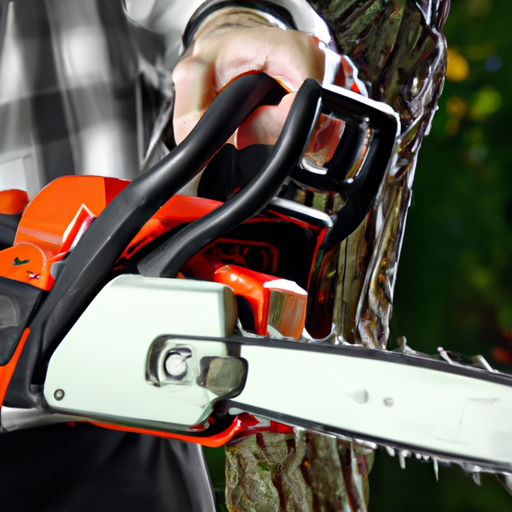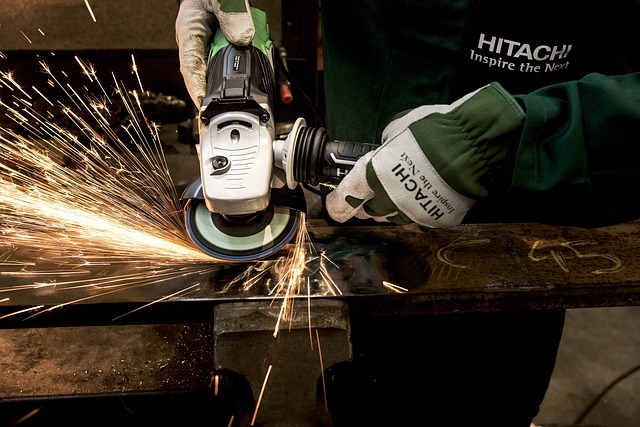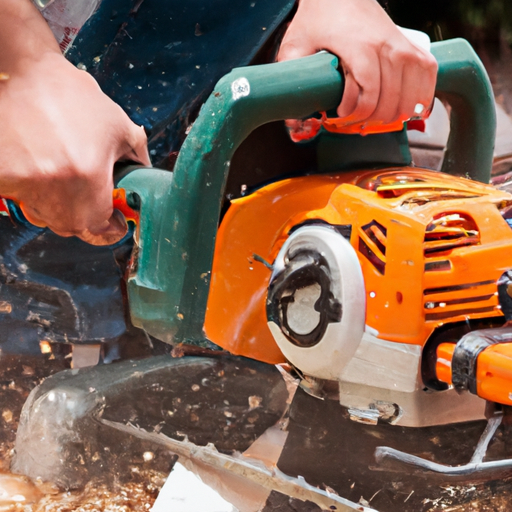Are you thinking about using a battery-powered chainsaw for your next project? Well, we’ve got some important safety precautions you should keep in mind. Using a chainsaw can be a powerful tool, but it’s crucial to prioritize safety to prevent accidents and injuries. In this article, we’ll go over some key safety precautions when using a battery-powered chainsaw, so you can work efficiently and confidently without compromising your well-being.
First and foremost, it’s essential to wear the appropriate safety gear when operating a chainsaw. This includes wearing a hard hat, safety glasses or goggles, hearing protection, and non-slip gloves. Additionally, make sure you’re wearing clothing that fits snugly and won’t get caught in the chainsaw. By wearing the proper gear, you can protect yourself from flying debris, loud noises, and potential injuries.
Another important safety measure is to ensure you have a firm grip on the chainsaw at all times. This will help you maintain control and prevent accidents. Before starting the chainsaw, make sure the chain brake is engaged, and hold the saw firmly with both hands. Keep a relaxed yet firm grip, and always be mindful of your surroundings. By being aware of your grip and maintaining control, you can minimize the risk of accidents and maintain a safe working environment.
In addition to wearing the right gear and having a firm grip, it’s also crucial to properly maintain your chainsaw. Regularly inspect the chainsaw for any signs of damage or wear, such as a loose chain or damaged guard. Keep the chainsaw clean and free from debris, as this can affect its performance and safety. It’s also important to regularly sharpen the chainsaw’s chain and keep it properly tensioned. By maintaining your chainsaw properly, you can ensure its optimal performance and reduce the risk of accidents or malfunctions.
In conclusion, using a battery-powered chainsaw can be a great tool for various projects, but it’s essential to prioritize safety. By wearing the appropriate safety gear, maintaining a firm grip, and properly maintaining your chainsaw, you can minimize the risk of accidents and work confidently. In our upcoming article, we’ll delve further into the maintenance tips for a battery-powered chainsaw, so stay tuned for more helpful information.
Importance of Safety Precautions
When it comes to using a battery-powered chainsaw, safety should always be the number one priority. This powerful tool can make tree cutting and other outdoor tasks easier and more efficient, but it also poses certain risks if not used correctly. In this article, we will discuss the importance of safety precautions when using a battery-powered chainsaw and provide you with valuable tips to ensure your safety and the safety of those around you.
Protecting Yourself and Others
One of the key reasons why safety precautions are necessary when using a battery-powered chainsaw is to protect yourself and others from potential accidents. The spinning chain and sharp teeth of the chainsaw blade can cause severe injuries if not handled properly. By following safety guidelines, you can greatly minimize the risk of accidents and ensure that you and those around you remain safe.
Minimizing Potential Hazards
Another crucial aspect of safety precautions is the minimization of potential hazards. Whether you are using a chainsaw for personal use or as part of a professional job, there are various risks involved. These risks include kickback, which is the sudden upward movement of the chainsaw, and the possibility of objects flying towards you during cutting. By taking the necessary safety precautions, you can significantly reduce these potential hazards and work more confidently with your battery-powered chainsaw.
Proper Attire and Gear
When operating a battery-powered chainsaw, it is essential to wear the proper attire and gear to protect yourself from potential injuries. Here are some key points to consider:
Wearing Protective Clothing
Always wear appropriate protective clothing when using a chainsaw. This includes a helmet or hard hat, safety goggles or glasses, ear protection, gloves, and steel-toed boots. It is important to choose clothing that fits well, is comfortable to move in, and provides adequate protection against the sharp blades of the chainsaw.
Using Safety Equipment
In addition to protective clothing, there are specific safety equipment items that should be used when operating a chainsaw. These include a chainsaw safety guard, which acts as a barrier between the operator and the moving chain, and a safety kill switch, which allows you to quickly turn off the chainsaw in case of an emergency. Make sure that all safety equipment is in good working condition before starting any cutting tasks.
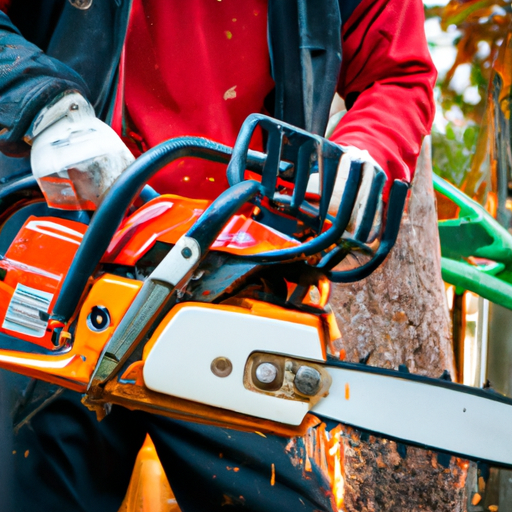
Battery-Powered Chainsaw Inspection
Before using a battery-powered chainsaw, it is crucial to perform a thorough inspection of the tool. This will ensure that it is in proper working condition and reduce the risk of malfunctions while in use. Here are two key areas of inspection:
Checking the Battery
Start by checking the battery of the chainsaw. Ensure that it is fully charged and securely attached to the tool. Look for any signs of damage or corrosion on the battery contacts and clean them if necessary. A fully charged battery will provide optimal performance and reduce the chances of unexpected power failure during use.
Inspecting the Chainsaw Components
Next, inspect the components of the chainsaw. Check the chain tension and make sure it is properly adjusted. Look for any signs of damage or wear on the chain, guide bar, and sprocket. Make sure that all screws and bolts are tightened and that there are no loose or missing parts. A well-maintained chainsaw will operate more efficiently and reduce the risk of accidents.
Safe Operating Practices
Operating a battery-powered chainsaw safely requires following certain practices and guidelines. By understanding and implementing these practices, you can greatly reduce the risk of accidents and injuries. Here are some key points to consider:
Understanding the User Manual
Read and familiarize yourself with the user manual that comes with your battery-powered chainsaw. The manual will provide important information on how to operate the tool safely and efficiently. Pay attention to the manufacturer’s recommendations and follow them accordingly.
Maintaining Proper Grip and Posture
Maintaining a proper grip and posture while using a chainsaw is crucial for your safety. Always hold the chainsaw with both hands, ensuring that your fingers wrap around the handles securely. Stand with your feet shoulder-width apart and keep a stable and balanced posture. This will provide better control over the tool and minimize the risk of accidents.
Avoiding Overexertion and Fatigue
Operating a chainsaw can be physically demanding, especially when cutting through thick branches or logs. It is important to avoid overexertion and fatigue, as this can increase the risk of accidents. Take regular breaks, stay hydrated, and listen to signals from your body. If you start feeling tired or fatigued, it’s essential to take a break and rest before continuing.
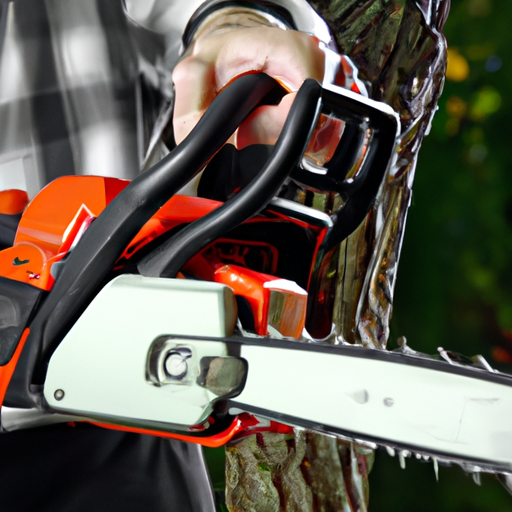
Precautions during Chainsaw Usage
While using a chainsaw, there are certain precautions that should be taken to ensure the safety of yourself and others. These precautions include:
Clearing the Work Area
Before starting any cutting tasks, it is essential to clear the work area of any potential hazards. Remove loose debris, such as branches, rocks, or other objects, that could interfere with the cutting process. This will create a safer working environment and reduce the risk of accidents.
Avoiding Unstable or Hazardous Surfaces
When using a chainsaw, make sure to avoid standing on unstable or hazardous surfaces. This includes wet or slippery ground, steep slopes, or areas with loose debris. It is important to have a solid and stable footing to maintain balance and control over the chainsaw.
Being Mindful of Surroundings
Always be aware of your surroundings when operating a chainsaw. Keep a safe distance from bystanders or other workers who are not involved in the cutting task. Be mindful of the location of power lines, fences, or any other obstacles that could pose a risk. By staying vigilant and aware, you can prevent accidents and injuries.
Handling the Chainsaw Safely
Proper handling of the chainsaw is essential for your safety and the effectiveness of the cutting task. Here are some key points to consider:
Using Both Hands
Always use both hands when operating a chainsaw. Hold the tool with a firm grip, ensuring that your fingers wrap around the handles securely. This will provide better control and stability, reducing the risk of accidents. Avoid using the chainsaw with one hand or in awkward positions.
Keeping the Chainsaw Away from the Body
It is important to keep the chainsaw away from your body while operating it. Avoid resting the tool against any part of your body, such as your leg or chest. This will prevent accidental contact with the chain and reduce the risk of injuries.
Avoiding Contact with the Chain
Never touch the moving chain or attempt to stop it with your hands or any other body part. The chain is extremely sharp and can cause severe cuts or amputations. If the chain gets stuck during operation, turn off the chainsaw and use a tool or another method to dislodge it safely.
Maintenance and Storage Guidelines
Proper maintenance and storage of your battery-powered chainsaw are crucial for its longevity and continued safety. Here are some guidelines to follow:
Properly Storing the Chainsaw
When not in use, store your chainsaw in a cool, dry place away from direct sunlight or extreme temperatures. Protect it from dust, moisture, and other elements that can damage the tool. Always place the chainsaw in a secure location, out of reach of children or unauthorized users.
Regularly Inspecting and Maintaining
Regularly inspect your chainsaw for any signs of damage or wear. Check the chain tension, guide bar, sprocket, and other components. Clean the tool after each use, removing any sawdust or debris that can affect its performance. Follow the manufacturer’s guidelines for lubricating the chain and performing other maintenance tasks.
Safely Handling and Replacing Batteries
When handling the batteries of your battery-powered chainsaw, it is important to follow proper safety practices. Avoid exposing the batteries to extreme temperatures or water. Do not attempt to disassemble or modify the batteries, as this can be dangerous. If a battery needs to be replaced, make sure to use the recommended type and follow the manufacturer’s instructions.
Emergency Preparedness
No matter how careful you are, accidents can still happen. It is important to be prepared for emergencies and have the necessary knowledge and resources to handle them. Here are some key points to consider:
Knowing First Aid Procedures
Having basic knowledge of first aid procedures can be crucial in case of accidents or injuries. Learn how to properly administer first aid for cuts, burns, or other chainsaw-related injuries. Keep a first aid kit readily available and ensure that it is well-stocked with essential supplies.
Having Emergency Contacts Available
Always have emergency contacts readily available, such as local emergency services and medical professionals. In case of accidents or severe injuries, having these contacts readily available can save precious time and potentially prevent further harm.
Training and Certification
For anyone using a chainsaw, seeking professional training and obtaining certification is highly recommended. This will provide you with the necessary knowledge and skills to operate the tool safely and efficiently. Many organizations and institutions offer chainsaw safety courses and certification programs. By investing in proper training, you can ensure that you are equipped with the necessary skills and knowledge to handle a battery-powered chainsaw.
Conclusion
In conclusion, safety precautions should never be overlooked when using a battery-powered chainsaw. The risks associated with these powerful tools can lead to severe injuries if not handled properly. By following the guidelines outlined in this article, you can ensure your safety and the safety of those around you while operating a chainsaw. Remember to wear the appropriate protective clothing and gear, inspect the chainsaw before each use, follow safe operating practices, and properly maintain and store the tool. Being prepared for emergencies and seeking professional training and certification are also crucial steps to ensure safety. By taking these precautions, you can enjoy the benefits of using a battery-powered chainsaw while minimizing the risks associated with its use.
